Herbs for Magickal and Medicinal Purposes
Last Updated on December 23, 2017 by Abigail Adams
There are two basic ways a witch can use herbs in her healing practices:
- For magickal purposes
- For medicinal purposes
These methods may overlap, as herbs may be simultaneously used for medicinal and magical purposes. The ways in which herbs are prepared and used may also overlap, as herbal oils, incense, and teas may be used for both medicinal and magical purposes.
Magickal Herbs
In addition to their medicinal purposes, herbs can also be used in many forms of magic for healing or other intentions. Perhaps the most important reference guide for this purpose is Scott Cunningham’s Encyclopedia of Magical Herbalism. However, like all things in magic, herbs should be used as they are meaningful to you, not just like how other witches have worked with them. Another reference is my Herb Lore and Magick article.
Like their medicinal qualities, herbs also possess magical correspondences which align them with the four elements as well as other things we may wish to bring to or put out of our lives. There are also a number of magical applications for herbs, including, but certainly not limited to:
- Incense
- Potpourri
- Talismans
- Pillows/sachets
- Teas/Infusions (potions)
- Essential oil blends
- Spell workings
- Kitchen magic
- Green/garden/hedge magic
Herbs and herbal essential oils can be used in magic just like other correspondences and they are not restricted to healing magic. Due to their medicinal effects, however, they are a powerful ingredient to add to any physical, mental, emotional, or spiritual healing work.
Incense/Potpourri
Making your own magical incense or potpourri is one of the sheer joys of working with herbs. Incense and potpourri are very similar: both combine herbs and oils to create a specific fragrance. Incense is burned, however, and so it is important to include herbs that smell good when smoked.
Incense is typically made by crushing herbs with a mortar and pestle and then combining the crushed herbs with essential oils until the right scent and consistency is reached. Potpourri, on the other hand, uses larger herb pieces and a variety of herbs that is appealing to the eye. Use a bit of orris root powder to “fix” the potpourri; it will help the smell to last.
Talismans
Talismans are charms made by combining herbs, stones, and any other relevant objects into one. The collected objects are then kept in small jars, pouches, pockets, lockets, or other containers. The talisman is then charged and kept close to the person throughout the period in which it is most useful. Talismans for healing are very powerful.
Pillows/Sachets
Small cloth pillows can also be filled with herbs for a variety of magical and healing purposes. A dream pillow is one nice way to use this method. The pillow can be filled with relaxing, sedative herbs as well as herbs related to the water element and dreaming/intuition. Another nice pillow to make is a relaxing eye-pillow, filled with lavender and other relaxing herbs.
Teas/Infusions
In addition to their medicinal properties, herbal infusions can also be used magically. The teas can be brewed at certain times or on certain days to obtain the greatest potency; the teas can include herbs selected for both their medicinal and magical value; and the teas can be used as potions or for other magical purposes during spells and rituals.
Essential Oil Blends
Like infusions, essential oil blends can be used for both medicinal and magical purposes. They can be carried in a small dram bottle, worn on the skin, used in the creation of an incense or potpourri, or burned on the diffuser during a ritual or spell.
Spell Workings
Herbs play an important role in spell workings for healing and other magical purposes. Often, herbs are charged as a part of the ritual or spell and then used. The herbs may be charged and then brewed into a magical tea. They may be charged and then used in a talisman (or vice versa). They may be used symbolically in the spell. Herbs are another tool that can be used in any variety of ways during a magical act.
Kitchen Magic
Many witches call themselves “kitchen witches” which can have duplicate meanings. One meaning is that their magic isn’t fancy—it uses just any ‘ole thing to get the job done. For me, though, kitchen witchery is also about cooking and the creation & consumption of food as a magical act.
Herbs and spices can be used in the kitchen without reservation to make food and drink both healing and magical. Herbs are particularly effective when used to induce sweating (thereby enhancing immunity) or when used to alleviate indigestion. When grown, gathered, or used with magical intention, those herbs become even more powerful.
Green/garden/hedge Magic
I have a black thumb, so this is not an area I’m very familiar with, but growing and harvesting one’s own herbs can be a very healing and magical process in and of itself.
When working with any of these magics, it is easy to “layer” the magic that you use to make your intent strong. For example, you could work a spell over many months, planting herbs at a specific time on a specific day, then harvesting the herbs in the same way. Those herbs could then be used for a specific magical working, to be executed at a specific date and time. These “layers” make the magic just that much stronger.
Medicinal Herbs
Herbs are one of the most ancient forms of medicine. They were the precursor to many of our modern pharmaceuticals. In ancient times, medicine men and women would use herbs to heal wounds and disease and were able to discover surprisingly accurate chemical information about plants from around the world.
Herbalists today rely on both ancient wisdom and the knowledge of modern science. There remains, however, a reverence for the plant and herbs are never used without first understanding their effects. Some herbs have immediate effect on the body and many can be toxic.
Herbal Applications
Medicinally, herbs can be applied in many different ways. The easiest and most common are:
- Herbal teas
- Herbal compresses & poultices
- Herbal oils & tinctures
Herbal Teas
Herbal teas are made from non-toxic herbs that can be taken internally. When using an herbal tea, it is easiest to purchase dried and cut herbs. Vitamin Cottage, Wild Oats, and Whole Foods are just a few examples of stores that carry many varieties of herbs. You can also order herbs wholesale.
There are two basic methods to prepare herbal teas:
- Infusion which is used for delicate plant parts like flowers and leaves as well as herbs with a high volume of essential oils (like mints). In an infusion, the herbs are steeped for 10-20 minutes in a tightly covered container with boiling water.
- Decoction which is used to extract the deeper essences from coarser leaves, stems, barks, and roots. In this method, the herbs are simmered in water, generally uncovered, until the water volume is decreased by about half, about one hour, and then strained.
When making an herbal tea, it is standard to use one ounce of dried herb, either alone or in formula, to each pint of water (or 1 Tbsp. per 8 oz. water). The standard therapeutic dosage of the tea is one-half cup tea, 3x per day.
Herbal Compresses & Poultices
Herbs can also be applied externally to relieve skin diseases as well as to be absorbed via the skin. An herbal compress can be made by soaking towels in a hot tea infusion and then applying to the skin, covering with flannel or a dry towel and then a hot water bottle or heating pad. It is also possible to soak a part of one’s body in the hot tea to achieve the same effect (such as a peppermint foot bath for indigestion, a tea tree foot bath for athlete’s foot, or a mustard foot bath for colds/flu).
A poultice is made by powdering or macerating fresh or dried herbs and applying them directly to the affected area. Alternately, you can also create a plaster by placing the herbs between two layers of linen or cotton.
Herbal Oils & Tinctures
Another very effective method of using herbs is through oil, both oil extracts and essential oils.
To create an oil extract, the herbs are prepared by macerating them and then adding olive or sweet almond oils (about one pint to 2 oz. herb). The mixture is then allowed to stand in a warm place for three days, or, a faster method is to heat the oil and herbs in a saucepan for at least an hour. In either method, the herbs are then strained off and the oil is bottled, preferably in a dark bottle to keep the oil from oxidizing too quickly.
Essential oils are easily purchased at any of the above locations or metaphysical stores like Herbs & Arts. They vary in expense and quality; you should always make sure to get the essential oil of the plant rather than anything synthetic. Most essential oils, with the exception of lavender and tea tree oils, need to be diluted in a carrier oil before they are applied to the skin. Sweet almond, jojoba, or apricot kernel are good choices for a carrier oil although in a pinch you can substitute olive oil or even good ‘ole vegetable oil.
One nice way to use essential oils is in a diffuser. A diffuser gently heats the oil and allows the scent to spread out throughout the space. I prefer diffusers to incense because they do not burn the herbs, which creates smoke. Essential oils are excellent for aromatherapy, one form of herbal healing.
Tinctures are similar to oils except that alcohol is used to extract the herbal ingredients. It is relatively easy to make tinctures at home by combining 4 oz. of powdered or cut herb with one pint of vodka, brandy, gin, or rum. Shake daily, allowing the herbs to extract for about two weeks. Let the herbs settle and then pour off the tincture, straining through a fine cloth or filter. It is best to put up a tincture at the new moon and strain it off on the full moon to take advantage of the drawing power of the waxing moon.
Tinctures are also readily purchased at any of the above locations. Some are made without alcohol and most are standardized. Like oils, tinctures should be stored in dark bottles and administered with an eyedropper. They are concentrated herbal extracts that only require a few drops to about a teaspoon per dose. Generally, tinctures are made of more potent herbs that are unsuitable for consumption via an herbal tea.
Using Herbs Medicinally
Like other foods and magical correspondences, herbs possess varying qualities. Some of the more common are: pain relieving, antibiotic/antiviral, gas relieving, sweat inducing, soothing, menstruation promoting, mucus expelling, energy stimulating, and wound healing.
Getting to know how herbs work is a matter of study and experience. If you want to use herbs medicinally, it is recommended that you get a good herb book (a few recommendations at the end) or even take more extensive classes. Herbs are medicine. They are not to be used or taken lightly. It can be difficult to standardize their use, so every practitioner should use caution and seek the advice of a trained herbalist if you are ever unsure!
There are, however, many common herbs and spices that are gentle and non-toxic. We’ll talk about a few of them in this class. If you are new to working with herbs, this would be an excellent place to begin experimenting!
Kitchen Herbs & Spices
- Anise will relieve colic and gas.
- Bay oil can be applied to arthritic joints and sprains.
- Cayenne is a wonder healer that can be used to prevent heart problems, lose weight, stave off colds/flu/fever, relieve arthritis pain, and more.
- Clove powder or oil can be used to relieve toothache pain.
- Cumin will prevent and relieve gas (serve with beans!).
- Dill will relieve colic and stomach ache.
- Garlic oil can be used for colds & flu and to relieve earache.
- Ginger can be applied via compress to treat pain and inflammation. It is also excellent for colds/flu/fever and to “activate” any herbal formula.
- Olive oil can be taken regularly as a mild laxative.
- Rosemary tea can be used as a substitute for aspirin for headache.
- Sage tea can be used as a gargle for sore throat.
Other Herbs
- Tea Tree (Cajeput) oil can be applied to treat athlete’s foot, to the scalp to get rid of lice & nits, to open blocked sinuses, to relieve nasal and mouth sores, as mouthwash (3 drops in a cup of water), to relieve muscle aches, for acne, for fingernail infections, to promote wound healing, and for arthritis.
- Chamomile is known as the “Band Aid” of the stomach and is indicated for all stomach and gastrointestinal discomfort. It is also an excellent remedy for menstrual cramps. Chamomile is traditionally used as a remedy for insomnia.
- Catnip is a sedative and therefore excellent for insomnia as well as gently relieving built-up emotional tension. It is also an excellent treatment for diarrhea and colic. It is best taken as tea.
- Damiana is an aphrodisiac and also useful for treating depression.
- Eucalyptus is one of the most powerful natural antiseptics and is wonderful for chest congestion. Can be rubbed on the chest and back or used in a humidifier or steam bath.
- Lavender is an aromatic anti-depressant that is also sleep-inducing.
- Lemongrass is the source of citronella oil and may be used to repel insects. It relieves gas and is antimicrobial. It has a sedative effect and is therefore helpful in relieving insomnia. Lemongrass supports the parasympathetic nervous system, which is important in the processes of healing and stress relief. The oil can also alleviate headache. It is excellent in a diffuser. Avoid use during pregnancy.
- Licorice root has been shown to be as effective at relieving heartburn as many commercial treatments (like “the purple pill”). It is also a mild laxative and is sweet, so is excellent to add to other bitter herbs. It should be avoided by those with high blood pressure or during pregnancy and should not be used for prolonged periods.
- Peppermint (and spearmint) are effective sweating agents to be used for cold, flu, and fever. They are also useful in relieving gas. Peppermint is also good for relieving depression and may be effective in relieving headache.
- Raspberry Leaf has been used for centuries by women during pregnancy and childbearing to facilitate delivery and prevent miscarriage. It has a relaxing effect on the uterus and is an excellent tonic for general uterine and reproductive health.
- Slippery Elm is a mucilaginous herb that is excellent for sore or irritated throats, cough, or dry throat and lungs. It is also a survival food and may be eaten as needed; it will generally stay down even when all else causes vomiting.
- Stevia is a herb that is 10-30 time sweeter than sugar. It makes an excellent, natural sugar substitute and may help to control blood sugar.
- Herbs can be combined to create a formula with multiple effects. It is important to store herbs and herbal formulas in glass jars to prevent volatile oils from evaporating. Be sure to label jars—particularly if there is more than one herb in the formula!
Aromatherapy
The inhalation of essential oils has been used for thousands of years as an aid to physical and emotional well-being. Aromatherapy links the healing powers of the oils themselves with the receptivity of the human skin and sense of smell. Aromatherapy is particularly useful in treating anxiety and depression and releasing/relieving stress.
Aromatherapy can be used in several ways. One is massage, which activates the circulation in the skin and speeds the entry of the oils into the body (make sure to dilute essential oils before using on skin!). Another method is to put a couple of drops of oil into a hot bath. The oils can also be inhaled by placing a couple of drops in a bowl of hot water and breathing in the steam (or by using a commercial vaporizer). Essential oils can be combined with Epsom and sea salts to create bath salts and bath bombs; they can also be added to an unscented base of shampoo, conditioner, or moisturizer. The oils can be inhaled directly from the bottle. And, my favorite method, is a candle-heated diffuser, which you can buy in just about any metaphysical or health food store.
Here are some common essential oils:
- Lemon balm and lemongrass are used to disperse depression.
- Sandalwood is used for tension and anxiety; is a sexual stimulant.
- Ylang-ylang is a sedative and antidepressant.
- Lavender can heal burns and wounds and is a relaxant.
- Rose is helpful for relieving tension in women, especially stress.
- Jasmine oil can treat addictions and is a powerful relaxant.
- Rosemary can relieve fatigue and headache when inhaled.
- Peppermint relieves headache and stimulates perspiration.
- Like cut herbs, essential oils can be combined in formula to increase their effectiveness.
Recommended Resources
Herb Books
The Way of Herbs by Michael Tierra, L.Ac., OMD
The New Age Herbalist by Richard Mabey
Herbs for Health & Happiness by Mo Siegel & Nancy Burke
The Holistic Herbal by David Hoffmann
Encyclopedia of Natural Medicine by Michael Murray & Joseph Pizzorno
Magic Books
Witch’s Brew: Good Spells for Healing by Witch Bree (Brenda Knight)
Cunningham’s Encyclopedia of Magical Herbs by Scott Cunningham
Complete Book of Oil, Incense, and Brews by Scott Cunningham
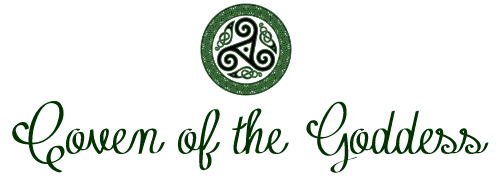
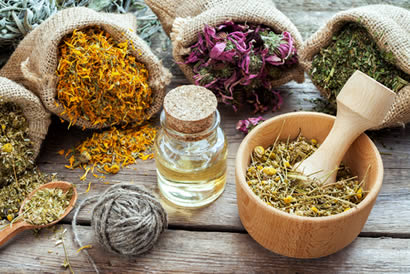
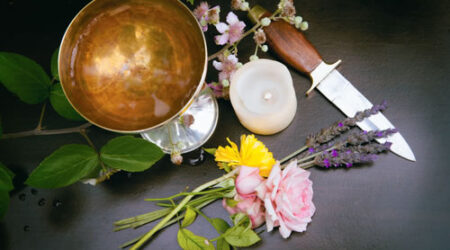
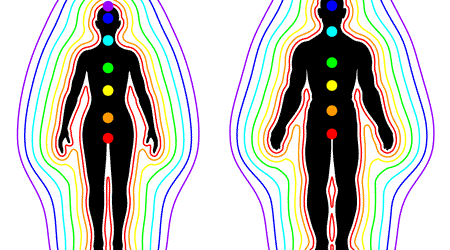
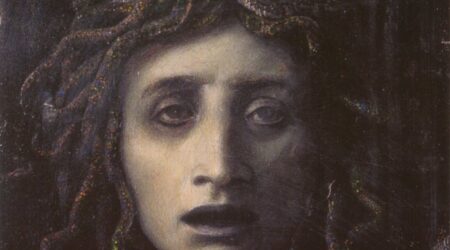
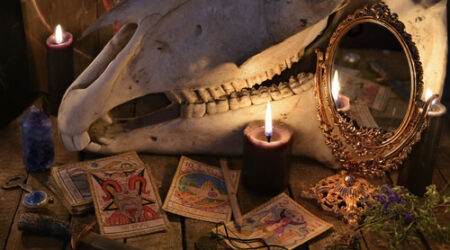
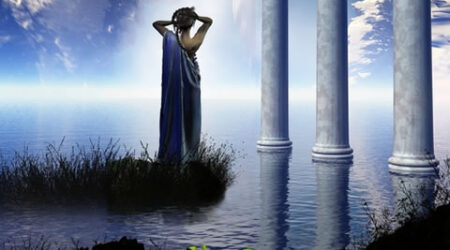

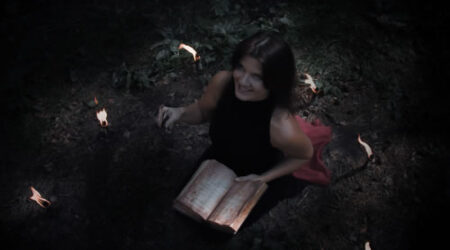
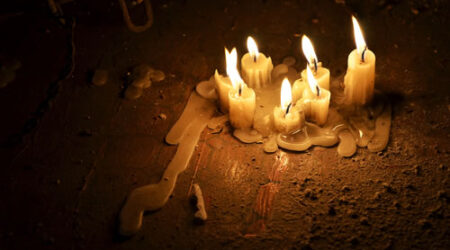
Leave a Reply